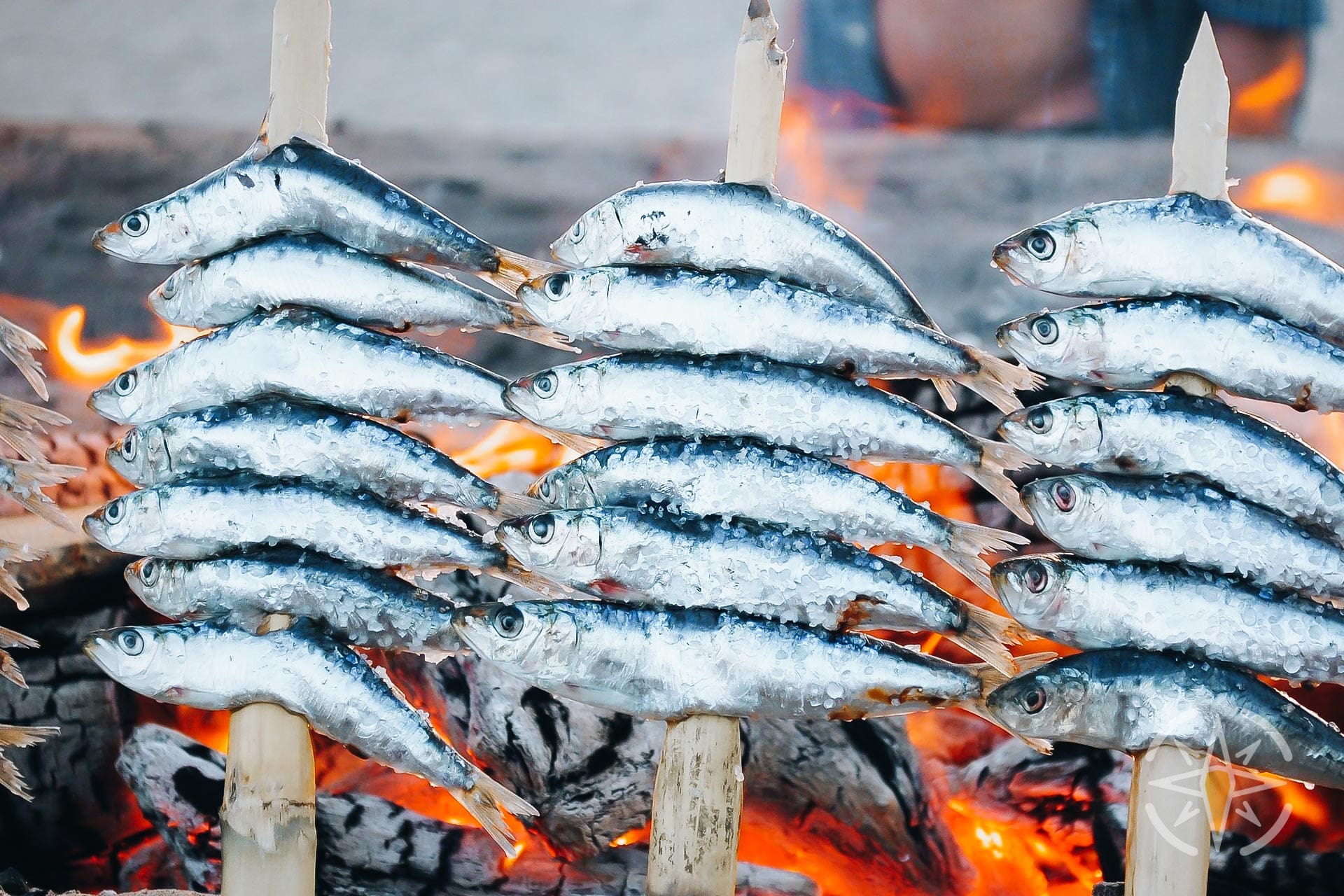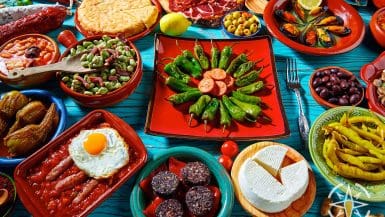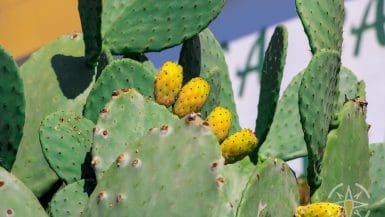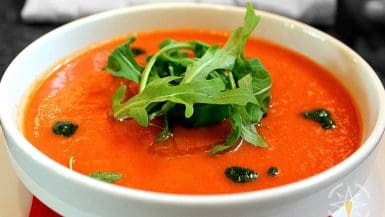Unique products you can't miss while traveling through the region!
🫒 Olives
For centuries, Andalusia has been known for its olive and olive oil production. Spain is the absolute leader in this field, filling 30% of the global market, with olives from Andalusia accounting for 83.50% of Spain's production.
Generally, olives are distinguished into black and green, but there are many more varieties (thousands), each with a distinct taste. Typical Spanish varieties include Lechin, Bical, Picuda, Cornicabra, Farga, Gordal Sevillana, Hojiblanca, Lemono, Manzanilla, Morrut, Gordal, and Picual. These are just some of the 260 varieties grown here.
They stand out due to their different colors, sizes, flavors, and fillings (such as olives stuffed with almonds). For instance, I recommend olives from producers like Lanzas, Bravo, or Partidas de la Abuela from Antequera. Often at markets, olives are sold by the box, where you can also try many of their varieties.

Olive oil
Spain also holds the top spot in olive oil production worldwide. When buying olive oil, it's worth checking its composition and type. For instance, oil from the most popular variety of olives, picual, will have a very fruity note, with aromas of fig, wood, and a kind of noticeable bitterness. These are primarily cultivated in the area around Jaen. Olive oil from the hojiblanca variety, most commonly grown around Malaga, Cordoba, and Seville, is distinguished by its bitter taste with a hint of almonds. Light and delicate will be the oil from the Arbequina variety.
It's best to buy PURO VIRGEN EXTRA olive oil, the healthiest option, still cloudy, made from fresh fruits and unprocessed.

Wine vinegar
Sherry vinegar from Jerez is among the most highly valued. Production began in the area around Cadiz (Kadyks, as I maintain the original city names on the blog), precisely in the regions between Jerez de la Frontera, Sanlúcar de Barrameda, and El Puerto de Santa María, and has been ongoing for several centuries. The best vinegar is obtained from Oloroso wine, and its flavor is influenced, of course, by the grape varieties used.
The vinegar is aged in oak barrels for a minimum of six months. If it ages for more than 2 years, it is called Vinagre de Jerez Reserva, and if it spends over 10 years in barrels, it is named Vinagre de Jerez Gran Reserva. In Andalusia, it is most commonly added to salads and used to coat the pan before frying seafood.
Andalusian sweet delicacies
- The delicacy Dulce de membrillo, also known under another name, carne de membrillo (Spanish for quince meat), serves as an addition to cheeses, desserts, and sometimes is served as a separate breakfast-dessert appetizer.
- Roscos de vino y almendra de Estepa – candies most commonly consumed around Christmas, flavored with Malaga wine and almonds.
- Polvorones de almendra - Small cookies packaged like candies made from almond paste
- Churros with hot chocolate
Cured meats and Spanish ham "Jamón Ibérico" and "Jamón serrano"
No one needs an introduction to the famous red sausage chorizo with the addition of aromatic paprika. Morchilla serrana, on the other hand, tastes very similar to Polish kaszanka (blood sausage). It is served in slices, cold or warm, just like Polish kaszanka is served.
Hams are divided into two basic types: „Jamón Ibérico” & „Jamón serrano”.
Serrano comes from white pigs. The meat is most often dried in mountain regions, at low temperatures (for at least 12 months). The best are marked as Gran Reserva and can dry for up to a year and a half. However, iberico is the more sought-after and appreciated by carnivorous connoisseurs of taste. It comes from the black Iberian pig breed. The price of the meat depends not only on the drying time but also on the pig's menu. Often, restaurant menus list types of jamón, so it's worth knowing the differences:
- Jamón ibérico de bellota – the highest quality jamon (pronounced 'hamon' – the j in Spanish is like an h), comes from pigs that are raised on mountain pastures, feeding on acorns, roots, and herbs
- Jamón ibérico de recebo - Animals are fed acorns on pasture, supplemented with fodder
- Jamón ibérico de de cebo de campo - The ham comes from animals fed on both farms and pastures
- De cebo - meat comes from animals fed only grain and fodder
It's best to ask for recommendations at specialized counters. Cutting ham on a special stand – jamonero, is a real art form.
Cheese
Seasoned with herbs, available in various degrees of maturity and hardness, they make an excellent addition to dishes, wine, or served as tapas. Their exquisite taste comes from the high quality of the milk used.
The basic distinction can be made based on the hardness of the cheese, and so we have from the hardest:
- Queso Curado
- Queso Semicurado
- Queso Blando
- Quesos Cremosos
Warto na etykietach sprawdzić czy ser jest owczy czy kozi (ovieja – owca, cabra – koza). Mnie osobiście najbardziej smakują sery curado & semicurado, są najbardziej wyraziste i mają przyjemną, twardawą konsystencję.
Wine
In another post, I delve more into the treasures of local vineyards. Spain is the third-largest wine producer in the world. In large stores (e.g., Carrefour), wine shelves are divided by types and regions of origin. You can find real taste gems for a modest amount of money.
Tasted fish and seafood
"Pescaíto frito" is nothing more than fish and seafood coated in flour and deep-fried. The smallest fish, which are perfect as an addition to beer, are called Chanquetes. Boquerones are fresh anchovies, eaten whole with your fingers, slightly larger than chanquetes. Grilled sardines on an open fire, known as espetos, are also very popular and can be found in almost every chiringuito serving food.







Leave a comment, ask a question...